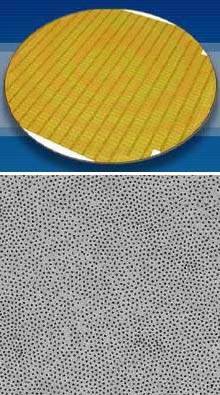Nanosys says it has found a material that can double the capacity of flash memory found in conventional chips by adding self-assembled metal nanocrystals to the flash manufacturing process. Nanosys, which has shown that the tiny particles of metal are compatible with today's manufacturing processes, has deals with flash makers Intel and Micron Technologies and expects that metal nanocrystals will be in products as early as 2009.

The new technology could be a boon to the rapidly growing flash industry. The capacity of electronic memory has steadily increased over the years, tracking with Moore's Law, which predicts that the number of transistors on a chip will double every two years. However, the dimensions of individual memory cells in flash chips are only shrinking in the horizontal direction, and not the vertical direction, due to material and physical constraints.
Nanocrystals are not entirely new to flash. Researchers at the University of Texas, Cornell University, and the University of Wisconsin, for instance, have been developing tiny particles for the memory. And Freescale Semiconductor, of Austin, TX, has plans to manufacture chips with semiconductor nanocrystals. But so far no one has mass-manufactured metal nanocrystals in flash.
Nanosys's nanocrystals are grown in the solution, and by controlling the composition of the solution, engineers can control the crystals' size. After the crystals form, other chemicals are added that allow special molecules to grow on the particle. These molecules, called ligands, let the nanocrystals maintain a uniform distance. Finally, the liquid with the metal nanocrystals, which resembles ink, is spun onto the silicon wafers that will become flash-memory chips.
